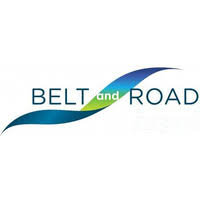The EU’s Answer To The Belt & Road: Coming Up With A Catchy Name And Logo
A lack of financial structuring and an onus on marketing does not bode well. But there is a solution, unless this is just pure marketing puff
By Chris Devonshire-Ellis

According to draft EU Council conclusions, European governments are to ask the European Commission to spend the coming nine months to develop a list of “high impact and visible projects” to rival Beijing’s Belt & Road Initiative. EU foreign ministers are expected to sign off on the idea this coming Monday, July 12.
According to the draft, among the challenges for the EU will be inventing up with a name for their plan which is as catchy as “Belt and Road”. It will also need a logo. Interestingly, this appears to have been placed as a higher marketing priority than Beijing ever gave the BRI scheme, which originally began as an export infrastructure push (first noted by us in 2013).
The BRI was initially the “Silk Road Economic Belt” when also announced in 2013, became “One Belt, One Road” (OBOR) in 2015, then when they realized it would require numerous routes to succeed, became simply “The Belt and Road Initiative” (BRI) in 2018. A logo does exist although it has never been uniformly adopted.

The EU Council draft states that “The Council notes that other key economies (China) have developed their own approaches and tools for connectivity and underlines the need for all such initiatives and actions to apply high international standards,” the conclusions read. “The Council requests the Commission and the High Representative [Josep Borrell] to proceed swiftly with the implementation” of the proposals it is making.
The EU draft shows it is seeking to move beyond the 2018 EU-Asia connectivity strategy and wants to build a “globally connected” EU which would allow the bloc to turn its attention to Africa and Latin America, also key destinations for Chinese investments. However, both regions have European colonial pasts, and especially from France, Belgium, the Netherlands, Italy, Spain, Portugal, and Germany, which could prove awkward in today’s politically sensitive climate. China’s BRI has not tended to face historical sensitivity issues.
The call to deploy the EU’s soft power is where the name and logo request appears. The EU Council is expected to ask the Commission, the executive branch of the EU, to develop what it called a “unifying narrative for actions taken by all relevant actors” which is political speak for a ‘description’.
The draft states “The narrative should include a recognizable brand name and logo developed together with the member states and should be supported by a campaign for greater public visibility.”
This also raises the question of the intended marketing. China has not really paid much attention to this in the BRI; the EU’s version seems to require some form of selling. But who too? Africans and South Americans? One suspects that as the EU doesn’t intend to finance all of this this, and wants the private sector to part fund it, adverts will be aimed at justifying the projects within the EU itself.
There is no price attached to the EU’s new scheme, but the Council is calling for a mix of public financing and private investment. It will ask the Commission to “present coherent and streamlined financing schemes to incentivize sustainable connectivity investments,” including EU and member-country-level financial instruments, export credits, loans and guarantees, as well as engaging the European Investment Bank and European Bank for Reconstruction and Development.
The Council’s draft document is incomplete and lacks detail on ways to encourage EU companies to commit to investments in locations that politicians consider strategic, but businesses deem risky – such as Africa and South America.
“The Council highlights the challenges of financing large-scale sustainable infrastructure and the importance of robust technical assistance,” the conclusions said. “It considers that predictable international norms and standards and sound regulatory frameworks are essential for a level playing field and a conducive environment for incentivizing private investment.”
There is the difference – in the EU, marketing plans and logos take preference over actually working out where the money is coming from and who will build these projects. It is telling the EU feels the need to market their as yet unnamed scheme when the Chinese just got up and did it. Of course that lack of detail over the financing could betray the fact that possibly the entire scheme is an attempt to be seen to be doing something – without actually conmitting anything to it.
We await the results with interest and provide some advice: The EU plans to raise capital will fail unless they can convince the private sector they can make returns of their investments. The best way to do that is via REITS – which means the EU needs to work out how to package infrastructure investments into sellable stocks that can then be listed for investors on European Stock Exchanges. The contractors get their money back, so do the taxpayers, and risk is shared.
Paying attention to the financing, rather than marketing the EU’s BRI alternative would be a better way around to get this properly organized. The EU foreign ministers have until Monday, apparently to sort this out. Signing off on a plan without any financial details or budgets however would appear high risk.
Related Reading
About Us
Silk Road Briefing is written by Dezan Shira & Associates. The firm has 28 offices throughout Asia, and assists foreign investors into the region. For strategic advisory and business intelligence issues please contact the firm at silkroad@dezshira.com or visit www.dezshira.com





